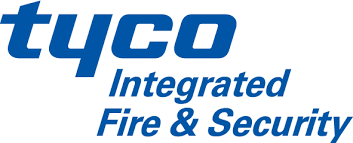In this comprehensive guide, we'll explore the importance of electrical safety in the workplace and provide essential tips to ensure a secure working environment for everyone.
Understanding Electrical Hazards
Electrical hazards in the workplace can manifest in various forms, including:
- Electric Shock: Exposure to live electrical currents can result in severe injuries or even death.
- Arc Flash: Sudden releases of energy due to electrical faults can cause explosions, intense heat, and serious burns.
- Fires: Faulty wiring, overloaded circuits, or malfunctioning equipment can lead to electrical fires, posing significant risks to life and property.
Risk Assessment and Management
Before diving into safety protocols, it's crucial for employers to conduct a thorough risk assessment of the workplace. This assessment should identify potential electrical hazards and determine the level of risk associated with each. Based on the assessment, employers can develop and implement effective risk management strategies, including:
- Engineering Controls: Implementing engineering controls such as insulation, grounding, and equipment safeguarding to minimize the risk of electrical hazards.
- Administrative Controls: Establishing administrative controls such as work procedures, training programs, and signage to ensure safe work practices and raise awareness about electrical hazards.
- Personal Protective Equipment (PPE): Providing appropriate PPE such as insulated gloves, safety goggles, and arc flash-rated clothing to employees working with or near electrical equipment.
Employee Training and Awareness
Proper training and awareness are key components of a successful electrical safety program in the workplace. Employers should ensure that all employees receive comprehensive training on:
- Hazard Recognition: Educating employees about the various electrical hazards present in the workplace and how to identify them.
- Safe Work Practices: Instructing employees on proper procedures for working with electrical equipment, including de-energizing, lockout/tagout, and testing for live wires.
- Emergency Procedures: Training employees on how to respond to electrical emergencies, including power outages, fires, and incidents involving electric shock or arc flash.
Equipment Maintenance and Inspection
Regular maintenance and inspection of electrical equipment are essential to prevent accidents and ensure workplace safety. Employers should establish a schedule for:
- Routine Maintenance: Conducting regular inspections, testing, and maintenance of electrical equipment and machinery to detect and address potential issues before they escalate.
- Periodic Testing: Testing electrical systems, circuits, and equipment periodically to ensure compliance with safety standards and regulations.
- Equipment Replacement: Promptly replacing damaged or malfunctioning electrical equipment to prevent accidents and ensure continued productivity.
Safe Work Practices
Implementing safe work practices is crucial to minimize the risk of electrical accidents in the workplace. Some essential practices include:
- Proper Wiring: Ensuring that all electrical wiring and connections are installed and maintained by qualified professionals according to relevant codes and standards.
- Overload Prevention: Avoiding overloading electrical circuits by distributing loads evenly and using circuit breakers or fuses to protect against overcurrents.
- Clearing Clutter: Keeping work areas clean and free of clutter to prevent tripping hazards and reduce the risk of accidental contact with electrical equipment.
- Reporting Hazards: Encouraging employees to report any electrical hazards or safety concerns promptly to supervisors or management for resolution.
Conclusion
Electrical safety is a shared responsibility that requires proactive measures from both employers and employees. By understanding the risks associated with electrical hazards and implementing proper safety measures, workplaces can create a safe and secure environment for everyone. Remember, when it comes to electrical safety, there's no room for shortcuts or compromises. Prioritize safety, stay informed, and empower employees to take an active role in maintaining a culture of safety in the workplace.
Ready to Elevate Your Workplace Safety?
Equip your employees with the knowledge and skills to ensure electrical safety with our comprehensive Electrical Safety Course. Our expert-led training covers essential topics such as hazard recognition, safe work practices, emergency procedures, and more.
Investing in employee safety is investing in the success of your business. Don't compromise on workplace safety—enrol your staff in our Electrical Safety Course today!
Together, let's power up safety in your workplace!












